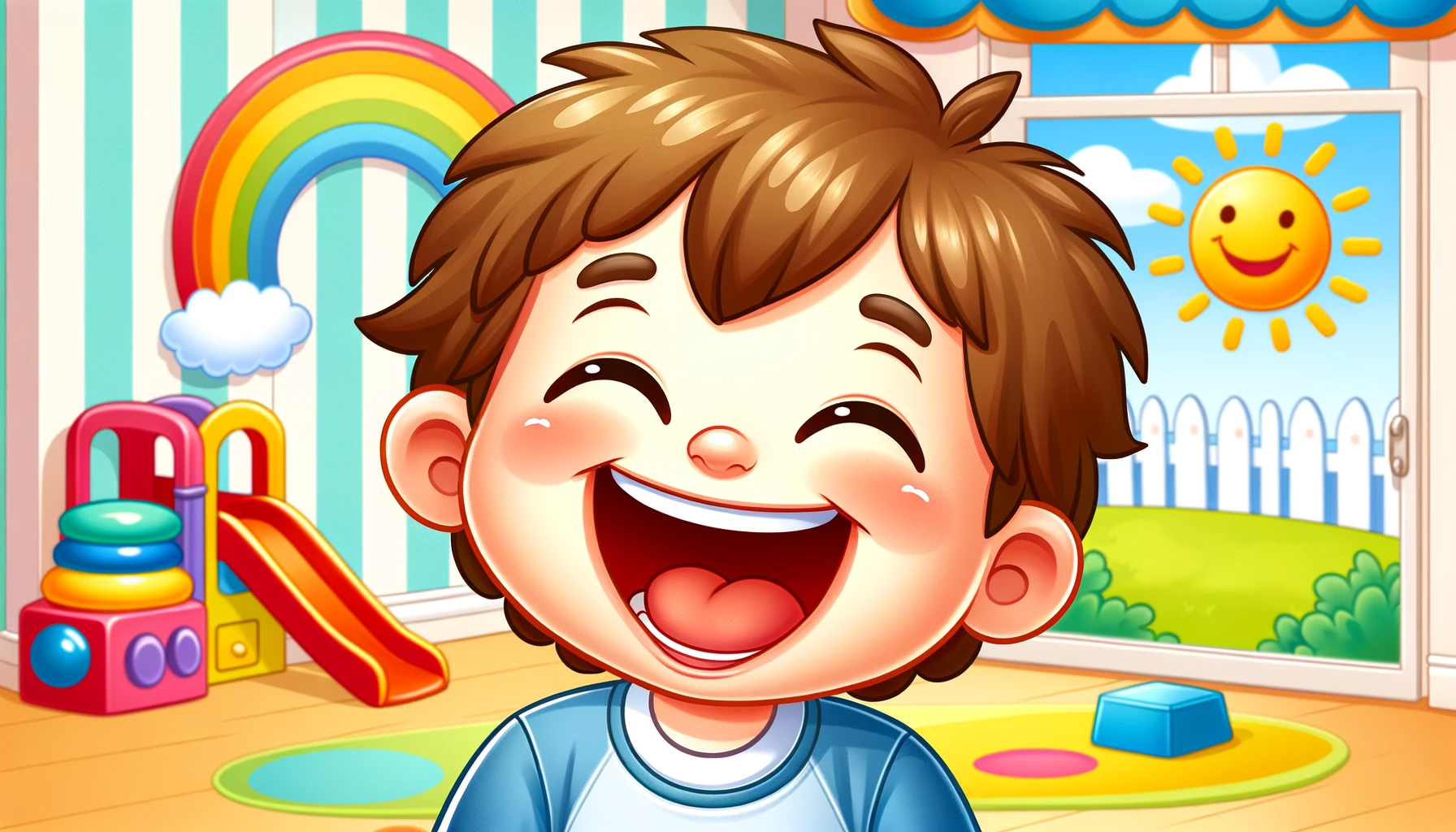Unleashing Laughter: Top Jokes for 5-Year-Olds
So what are the best jokes for 5-year-olds that will leave them giggling and laughing along with you?
Humour is not just about sharing a laugh; it plays a pivotal role in the overall development of a child. When 5-year-olds giggle over a joke, they’re not just being entertained. They’re also learning. Laughter is a powerful tool in nurturing a child’s emotional health, stimulating their cognitive growth, and enhancing their social skills.
At this tender age, children are rapidly expanding their vocabulary and understanding of the world around them. Jokes, especially those tailored for 5-year-olds, can significantly aid in this journey. They introduce youngsters to the playful use of language, encouraging them to explore meanings and context. It’s not just about the words; it’s about the joy and surprise that comes with the punchline. This kind of linguistic play is a cornerstone in cognitive development, fostering creativity and lateral thinking.
A Collection of The Best Jokes For 5-Year-Olds
Creating a joyful and laughter-filled environment for 5-year-olds is essential, and what better way to do this than through a carefully curated list of age-appropriate jokes? These jokes are designed to be simple, engaging, and perfectly suited to the cognitive level and interests of young children. To make it easy and fun, the jokes are organized into thematic subsections:

Animal Antics Jokes
Animals have a special place in the hearts of children, especially those as young as five. Their curiosity about the animal kingdom can be nurtured through humour. Here’s a collection of 25 animal-themed jokes, perfect for 5-year-olds, featuring familiar animals like cats, dogs, and farm animals:
- Why do cats always get their way? Because they are purr-suasive!
- What do you call a sleeping bull? A bulldozer!
- Why did the cow go to outer space? To see the Milky Way!
- What do you call a dog magician? A labracadabrador!
- Why can’t a leopard hide? Because he’s always spotted!
- What do you get from a pampered cow? Spoiled milk!
- Why don’t elephants use computers? They’re afraid of the mouse!
- What do you call a bear with no teeth? A gummy bear!
- Why did the chicken join a band? Because it had the drumsticks!
- What do you call a pig that knows karate? A pork chop!
- Why did the sheep go to school? To learn Baa-thematics!
- What do you call a cat who loves bowling? An alley cat!
- Why was the horse so happy? Because he lived in a stable environment!
- What do you call a cold dog? A Chilli Dog!
- Why do ducks have feathers? To cover their butt quacks!
- What do you call a cat that gets everything it wants? Purrsuasive!
- Why do cows have hooves instead of feet? Because they lactose (lack toes)!
- What do you call a fish with no eyes? Fsh!
- What do you call a dog that’s a magician? A labracadabrador!
- Why did the dinosaur cross the road? Because chickens hadn’t evolved yet!
- What do you call a sleeping wolf? An unawarewolf!
- Why don’t sharks eat clowns? Because they taste funny!
- What do you get if you cross a cat with a dark horse? Kitty Perry!
- Why did the turkey join the band? Because it had the drumsticks!
- Why don’t seagulls fly over the bay? Because then they’d be bagels!
These jokes not only entertain but also subtly educate, as they engage children’s minds in wordplay and the fun aspects of learning about different animals. They’re perfect for light-hearted family time or as a fun learning tool in a young child’s life.
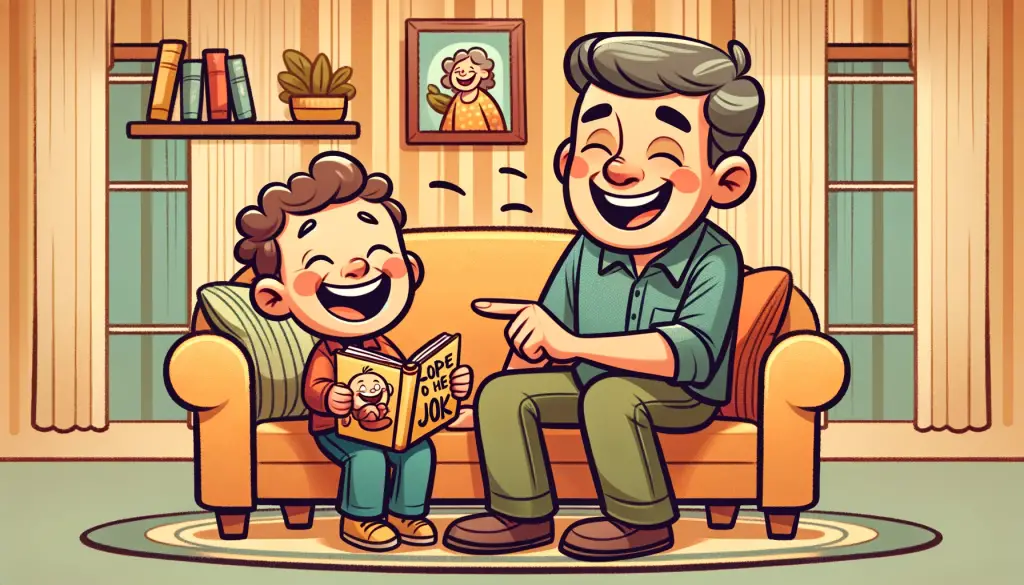
Silly Sounds and Word Play
The enchanting world of language offers endless amusement for 5-year-olds, especially when it’s filled with playful sounds and clever wordplay. Here are 25 jokes that are not only fun but also serve as a gentle introduction to the whimsical side of words, perfect for young minds beginning to explore language:
- What do you call cheese that isn’t yours? Nacho cheese!
- Why did the tomato turn red? Because it saw the salad dressing!
- What do you get when you put a candle in a suit of armor? A knight light!
- Why did the bicycle fall over? Because it was two-tired!
- What do you call a fake noodle? An impasta!
- What do you call an alligator in a vest? An investigator!
- Why don’t scientists trust atoms? Because they make up everything!
- What’s orange and sounds like a parrot? A carrot!
- Why did the picture go to jail? Because it was framed!
- What do you call a snowman with a six-pack? An abdominal snowman!
- Why do we tell actors to ‘break a leg’? Because every play has a cast!
- How do you catch a squirrel? Climb up a tree and act like a nut!
- What’s a skeleton’s favorite musical instrument? The trombone!
- What do you call a dinosaur that is sleeping? A dino-snore!
- What do you call a belt made of watches? A waist of time!
- Why did the kid bring a ladder to school? Because he wanted to go to high school!
- What do you call a boomerang that won’t come back? A stick!
- Why did the math book look sad? Because it had too many problems!
- What do you call a bear with no ears? B!
- What did one wall say to the other wall? “I’ll meet you at the corner!”
- Why did the scarecrow win an award? Because he was outstanding in his field!
- What do elves learn in school? The elf-abet!
- Why couldn’t the bicycle stand up by itself? It was two-tired!
- What did the fish say when it hit the wall? “Dam!”
- What do you call a lazy kangaroo? A pouch potato!
These jokes are a delightful way for children to engage with language, exploring sounds and meanings in a context that’s both educational and hugely entertaining. They encourage a love for language and a sense of playfulness, key components in language development at this age.
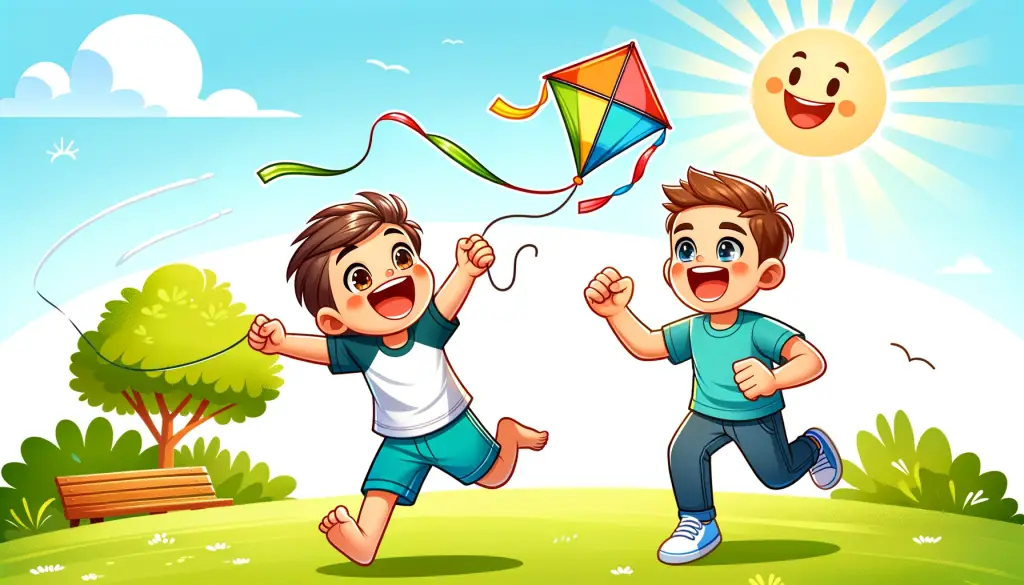
Everyday Giggles
Everyday life is full of humorous moments, especially when seen through the eyes of a 5-year-old. Here’s a collection of 25 jokes that revolve around daily routines and family life, providing a relatable and delightful perspective for young children:
- Why did the boy bring a ladder to school? Because he wanted to go to high school!
- Why did the girl smear peanut butter on the road? To go with the traffic jam!
- What did one plate say to the other plate? Dinner is on me!
- Why did the cookie go to the doctor? Because it felt crummy!
- What do you call an old snowman? Water!
- Why did the kid throw his clock out of the window? He wanted to see time fly!
- Why did the banana go to the doctor? Because it wasn’t peeling well!
- What do you call a room with no ghosts in it? A living room!
- Why was the math book sad? Because it had too many problems!
- What do you call a lazy kangaroo? A pouch potato!
- Why don’t eggs tell jokes? Because they might crack up!
- What gets wetter as it dries? A towel!
- Why did the teddy bear say no to dessert? Because she was stuffed!
- What did the digital clock say to the grandfather clock? Look, no hands!
- Why did the kid study in the airplane? He wanted a higher education!
- What has four wheels and flies? A garbage truck!
- Why don’t some couples go to the gym? Because some relationships don’t work out!
- Why did the scarecrow win an award? Because he was outstanding in his field!
- What do you call a sleeping bull? A bulldozer!
- How does the ocean say hello? It waves!
- Why was the computer cold? It left its Windows open!
- What is a cat’s favorite color? Purrple!
- Why did the tomato turn red? Because it saw the salad dressing!
- What do you call a dinosaur that is sleeping? A dino-snore!
- Why did the picture go to jail? Because it was framed!
These jokes not only offer a giggle but also reflect the child’s world, making humor a part of their daily life. They encourage children to look at the lighter side of their everyday experiences, fostering a positive and joyful outlook.
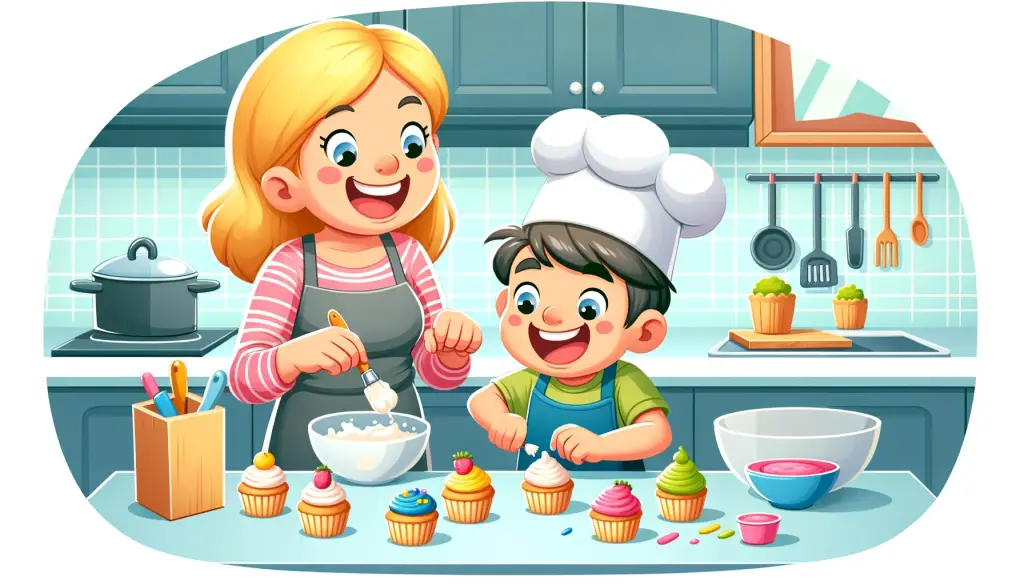
Food Funnies
The world of food is not just about eating; it’s a source of amusement, especially for 5-year-olds. Here are 25 light-hearted food jokes that play into children’s curious and humorous relationships with their meals. Focusing on fruits, vegetables, and typical snacks, these jokes are sure to bring smiles and giggles to young faces:
- What do you call cheese that isn’t yours? Nacho cheese!
- Why did the tomato turn red? Because it saw the salad dressing!
- What do you call a fake noodle? An impasta!
- Why was the math book sad? Because it had too many problems!
- Why did the banana go to the doctor? Because it wasn’t peeling well!
- What do you call an old snowman? Water!
- Why did the cookie go to the doctor? Because it felt crummy!
- What do you get from a pampered cow? Spoiled milk!
- Why did the yogurt go to the art exhibition? Because it was cultured!
- What do you call a sleeping pizza? A piZZZZa!
- Why don’t eggs tell jokes? They might crack up!
- What did the baby corn say to the mama corn? Where’s popcorn?
- Why was the belt arrested? For holding up a pair of pants!
- Why did the orange stop? It ran out of juice!
- Why did the jelly wobble? Because it saw the milk shake!
- What do you call a sad strawberry? A blueberry!
- Why don’t some couples go to the gym? Because some relationships don’t work out!
- What do you call a fake burger? An impossible burger!
- What did one plate say to the other plate? Dinner’s on me!
- What do you call a bear with no teeth? A gummy bear!
- Why did the biscuit complain? Because it felt crumby!
- What’s orange and sounds like a parrot? A carrot!
- Why do bananas have to put on sunscreen? To avoid peeling!
- Why was the belt arrested? For holding up a pair of pants!
- What’s a ghost’s favorite fruit? Boo-berries!
These jokes not only entertain but also subtly educate, as they playfully incorporate various food items, helping children engage with the food they eat in a fun and memorable way.
Fantasy and Fairy Tales
The magical realms of fantasy and fairy tales are a playground for the imagination, especially for young children. To tap into this wonderous world, here are 25 jokes that draw on elements of fantasy and fairy tales, perfect for sparking creativity and laughter in 5-year-olds:
- Why can’t you give Elsa a balloon? Because she will let it go!
- What do you call an old snowman? Water!
- Why did Cinderella get kicked off the soccer team? Because she always ran away from the ball!
- What do you call a fairy who doesn’t take a bath? Stinker Bell!
- Why did the dragon refuse to fight knights? Because it was tired of canned food!
- What kind of bed does a mermaid sleep in? A waterbed!
- Why don’t wizards trust armour? Because it’s a bit rusty!
- What’s a witch’s favourite subject in school? Spelling!
- Why was the wizard a good listener? Because he was all ears!
- Why did the vampire need mouthwash? Because he had bat breath!
- What do you get when you cross a snowman and a dog? Frostbite!
- Why did the elf go to school? To learn the elf-abet!
- What do you call a very small valentine? A valen-tiny!
- Why couldn’t the pirate play cards? Because he was sitting on the deck!
- What do you call a witch’s garage? A broom closet!
- What did the wizard say to the fisherman? Pick a cod, any cod!
- Why did the ogre sit in the sugar bowl? To sweeten his bottom!
- Why do dragons sleep during the day? So they can fight knights!
- What do you call a fairy using the computer? Anything you want, she can’t hear you!
- What do you call a ghost’s mistake? A boo-boo!
- Why don’t giants play hide and seek? Because they always stand out!
- What do you call an angry fairy? Tinker Hell!
- Why did the genie go to school? To get a little more knowledge!
- What do you call a goblin who gets too close to a bonfire? A toasty ghosty!
- What did one unicorn say to the other unicorn? Nothing, unicorns don’t talk!
These jokes blend the fantastical with humour, encouraging children to dive into a world where anything is possible and laughter is a charming spell all its own.
Creating the Perfect Joke: A Guide for Parents
Creating child-friendly jokes isn’t just about sparking laughter; it’s a wonderful way to bond with your child and encourage their creative thinking. Here’s a guide for parents on how to craft jokes that are not only funny but also resonate with young minds, using everyday scenarios as a springboard for humour.
Understanding Your Audience
- Know Their Interests: Tailor jokes to your child’s interests, whether it’s dinosaurs, space, or fairy tales.
- Keep It Simple: Use straightforward language and concepts your child can easily grasp.
- Age-Appropriate Humor: Ensure the content is appropriate for a child’s age and understanding.
Using Everyday Scenarios
- Find the Funny in the Familiar: Everyday life is full of humorous possibilities. A misplaced toy, a funny-looking vegetable, or even a messy room can be a source of a joke.
- Play With Words: Puns and plays on words can be a delightful way to engage your child. For example, “Why don’t we write with a broken pencil? Because it’s pointless!”
Encouraging Creativity
- Involve Your Child: Ask your child to come up with the punchline. It encourages them to think creatively.
- Build a Story Together: Start a funny story and let your child add elements to it. This not only creates a joke but also a bonding activity.
Practice Makes Perfect
- Delivery is Key: Practice the timing and delivery of the joke. A well-timed pause or an expressive face can make all the difference.
- It’s Okay to Be Silly: Don’t be afraid to be goofy. Children love it when adults step into their world of silliness.
Be Responsive to Their Reactions
- Observe and Adapt: Pay attention to what makes your child laugh and tailor your jokes accordingly.
- Encourage Them to Share: Ask your child to share jokes they have heard or created. It’s a great way for them to learn about storytelling and humour.
By following these tips, parents can create a joyful and funny joke that entertains. Remember, the goal is to have fun and laugh together, strengthening the bond between parent and child.
The Art of Joke-Telling for Young Minds
The world of a 5-year-old is full of wonder and curiosity, making it the perfect stage to introduce the art of joke-telling. Understanding the cognitive level of children at this age is key to knowing what makes a joke click for them. At five, kids are developing a sense of humour that enjoys the unexpected and the playful twist on the familiar. Their thinking is concrete, so jokes that involve physical humour or simple wordplay are particularly appealing. They find humour in the absurd or in situations that defy their understanding of how the world works.
For parents eager to introduce jokes to their children, it’s important to start with simple concepts. Puns or plays on words that align with their everyday experiences can be a great starting point. For instance, jokes about animals, everyday objects, or familiar situations are more likely to resonate with them. It’s also a time when children are mastering language, so word-based jokes can be both fun and educational.
When introducing jokes, it’s beneficial to keep a few tips in mind:
- Start Simple: Choose short jokes and have a clear punchline. Long-winded jokes can lose their attention.
- Be Expressive: Use facial expressions, gestures, and voice modulation to make the joke more engaging.
- Encourage Participation: Ask them to share jokes they know or help them make up their own. It’s a great way to foster creativity.
- Explain the Humor: Sometimes, you might need to explain why a joke is funny. This can be a valuable learning experience for them.
- Positive Reinforcement: Laugh with them, even if the joke is one you’ve heard a million times. Your reaction encourages them to continue exploring humour.
By incorporating these tips, parents can effectively and enjoyably introduce their children to the joy of joke-telling, fostering a love for humour and enhancing their linguistic and social skills in a fun, engaging way.
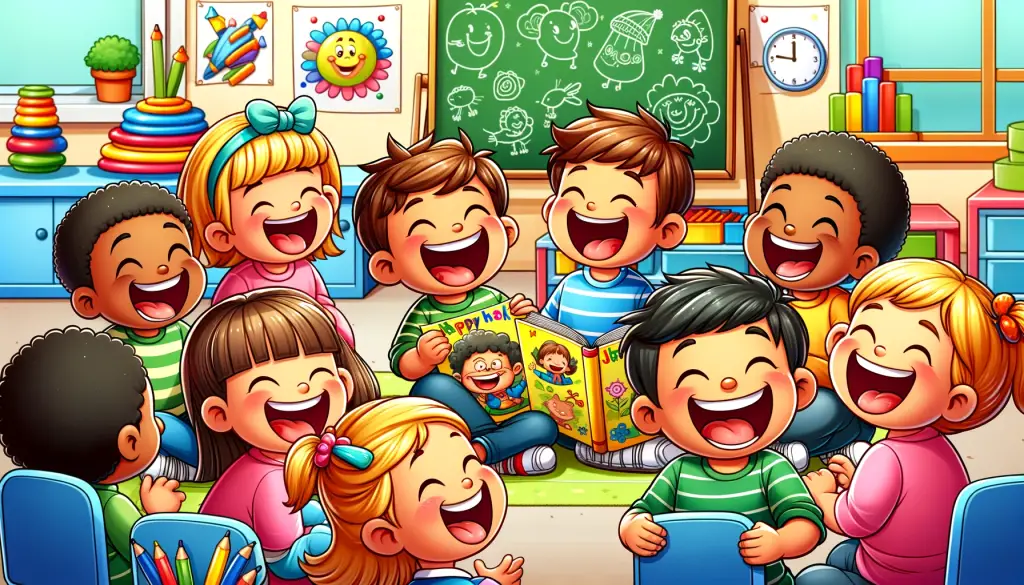
Engaging With Your Child Through Humour
Incorporating humour into everyday parenting is a wonderful way to connect with your child and create a positive family atmosphere. Here are some strategies and shared experiences from other parents on how to effectively use humour in your daily interactions with your child.
Embrace the Silly Moments
- Go With the Flow: Sometimes, the funniest moments are unplanned. Be open to spontaneous silliness and laughter.
- Make Funny Faces or Sounds: Simple things like making a funny face or a silly sound can lighten the mood and bring joy to your child.
Use Humor to Diffuse Tension
- Lighten the Mood: In moments of frustration or minor conflicts, a well-timed joke or a playful approach can help ease tensions.
- Be Mindful of Timing: It’s important to know when humour is appropriate and when to be serious, especially in sensitive situations.
Create Humorous Traditions
- Funny Bedtime Stories: Make up humorous bedtime stories together, or put a funny twist on classic tales.
- Joke of the Day: Start a tradition where each family member shares a joke at dinner time.
Learn From Your Child
- Be a Humor Student: Children often have their own sense of humour. Learn what makes your child laugh and join in their fun.
- Encourage Role Reversal: Let your child tell you jokes or make you laugh. It boosts their confidence and shows that you value their sense of humour.
Share Real-Life Funny Stories
- Use Everyday Experiences: Share funny incidents from your day or childhood stories. It helps children understand that humour is a part of life.
- Relatable Humor: Use situations that your child can relate to, making the humour more effective and engaging.
Encourage Creative Expression
- Draw Funny Pictures Together: Collaborate on creating humorous drawings or comics.
- Playful Word Games: Engage in wordplay or puns during conversations, enhancing their language skills through humour.
By engaging with your child through humour, you’re not only creating a fun and loving environment but also teaching them valuable life skills like resilience, creativity, and the ability to navigate various social situations with ease. Remember, the laughter you share with your child today builds the memories they will cherish forever.
Concluding The Funniest Jokes For 5-Year-Olds
In this journey of exploring jokes for 5-year-olds, we’ve seen how humour is not just a source of entertainment but a vital tool in a child’s development. From the animal antics that tickle their fancy to the silly sounds and wordplays that spark their linguistic curiosity, jokes are a gateway to learning and growth.
The everyday giggles drawn from routine scenarios, the light-hearted food funnies, and the enchanting world of fantasy and fairy tales all contribute to a child’s imaginative and cognitive development. Moreover, crafting the perfect joke as a parent is not just about laughter; it’s about bonding, nurturing creativity, and understanding your child’s world.
Engaging with your child through humour is a profound way to strengthen your relationship, ease tensions, and encourage a joyful approach to life. It helps in building a positive family atmosphere where laughter is a shared language.
As we conclude, the invitation to parents is clear: dive into the world of humour with your child. Use it as a tool to connect, teach, and most importantly, enjoy the precious moments of laughter and joy that come from a shared giggle or a silly joke. Remember, in the world of a child, laughter is a sprinkle of magic in the every day, and as parents, you have the delightful opportunity to be a part of that magic.

